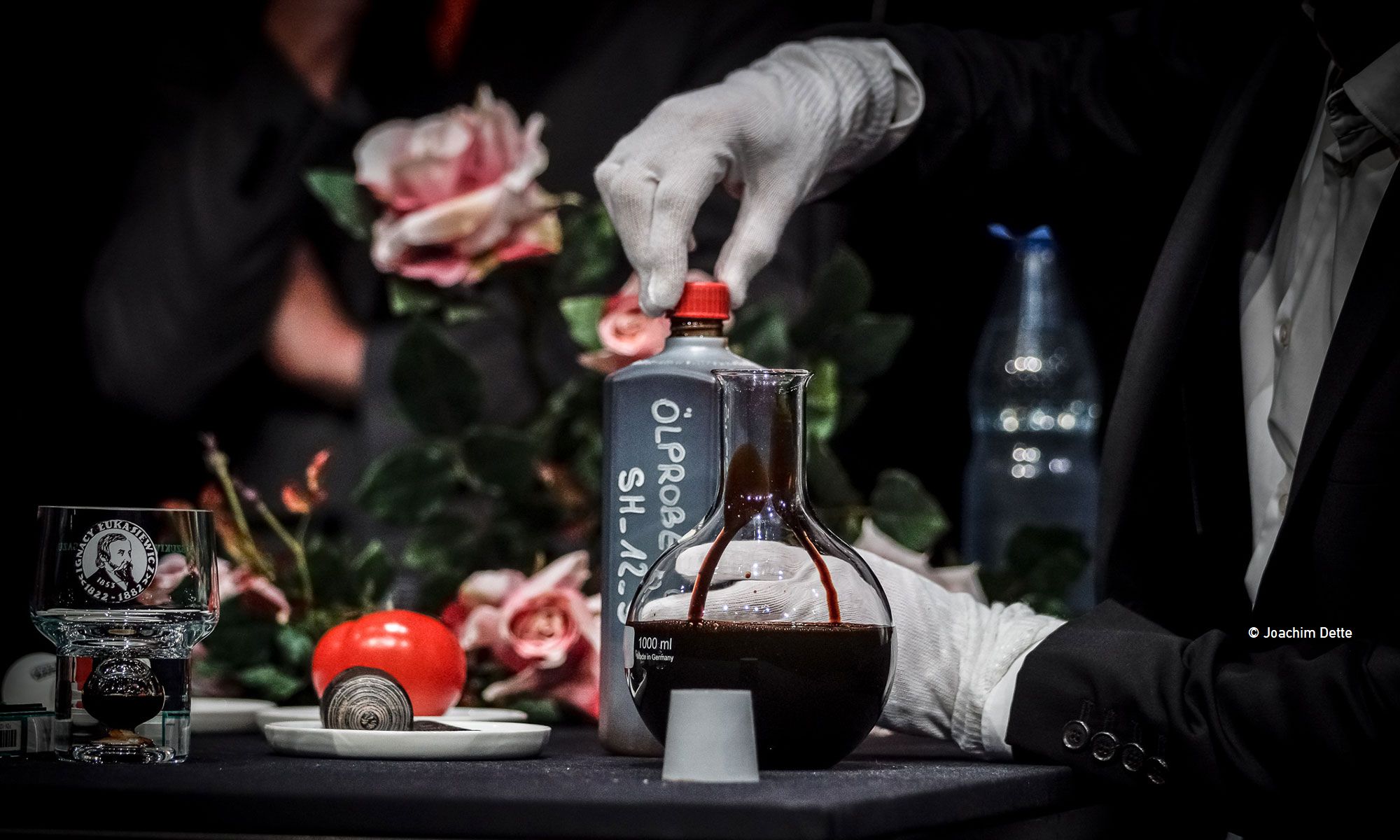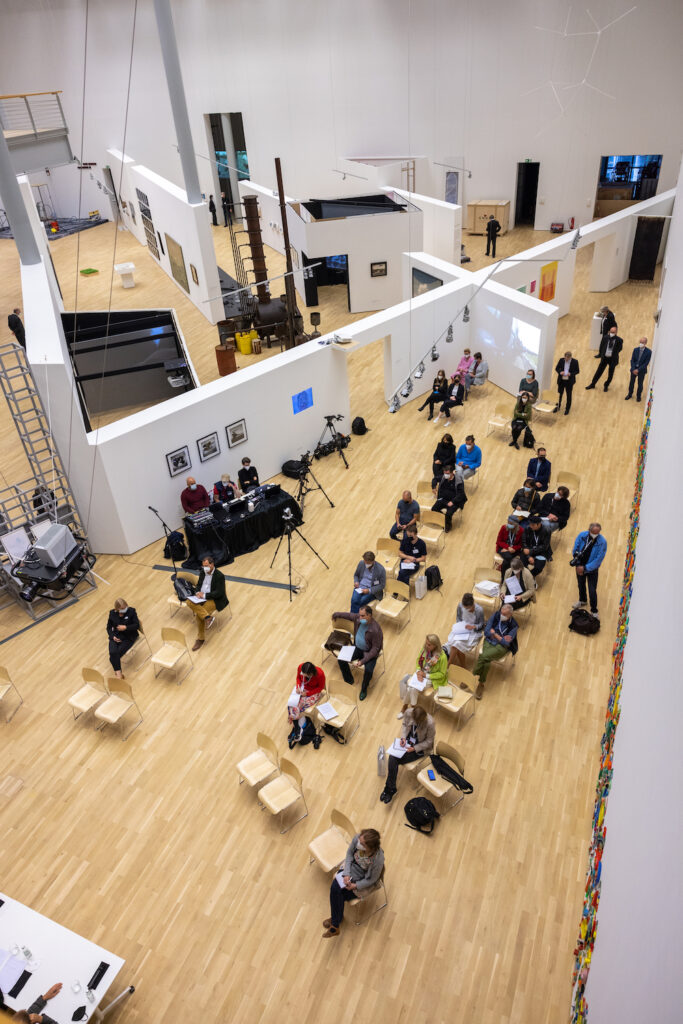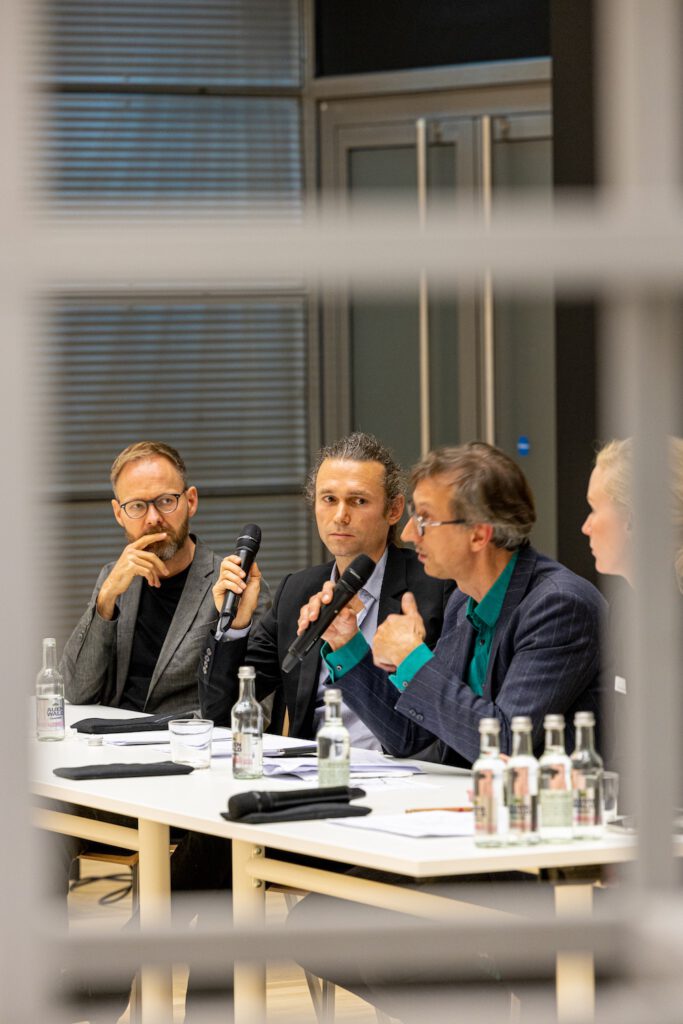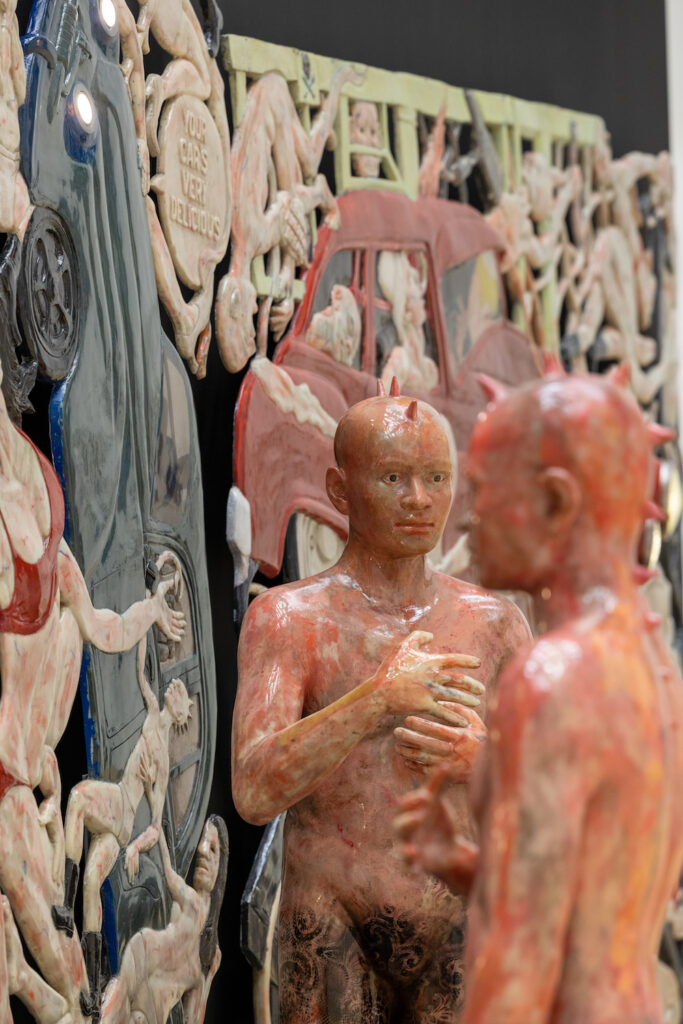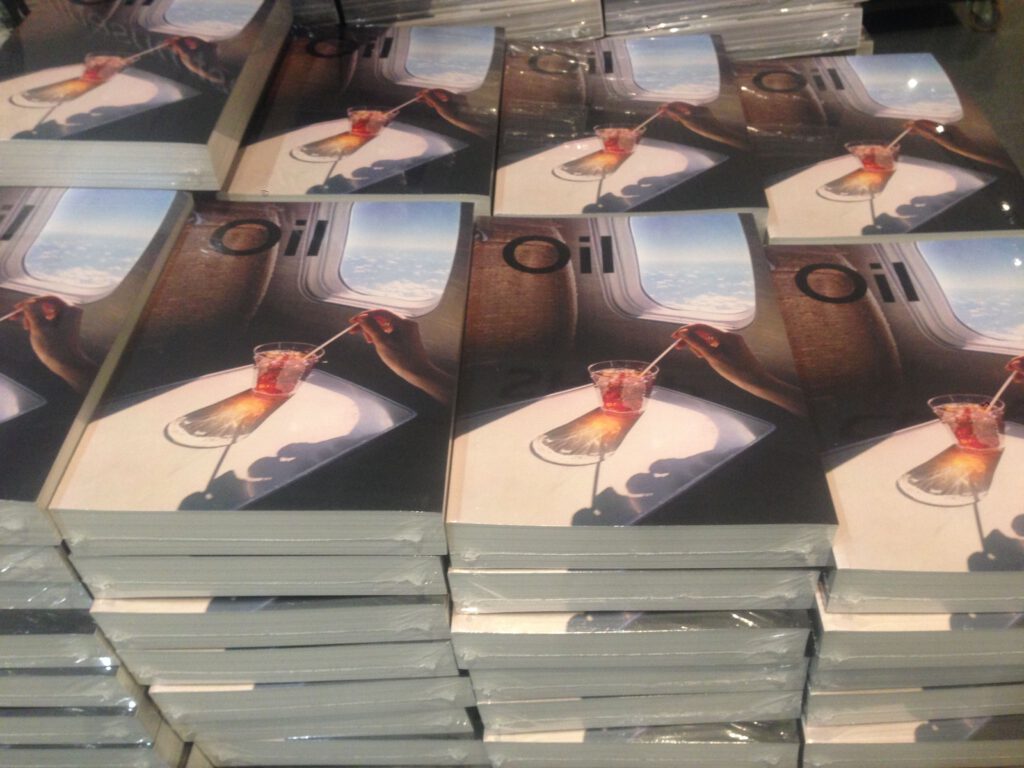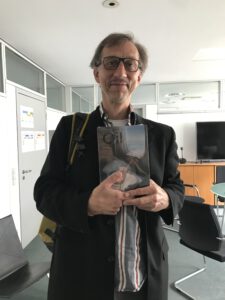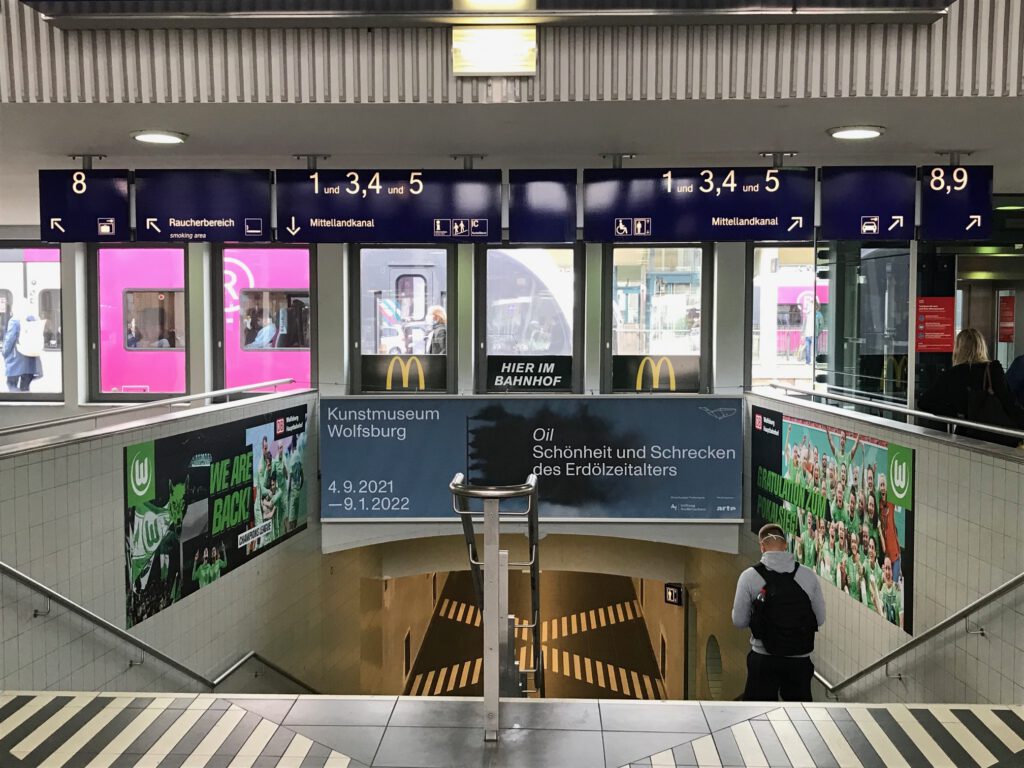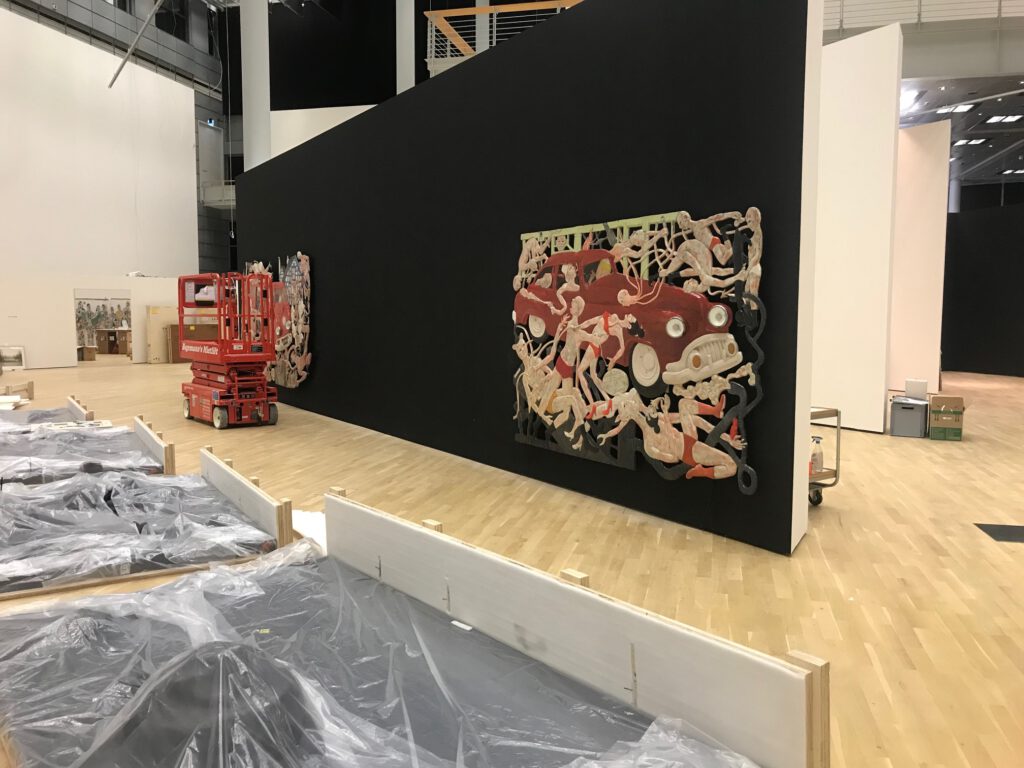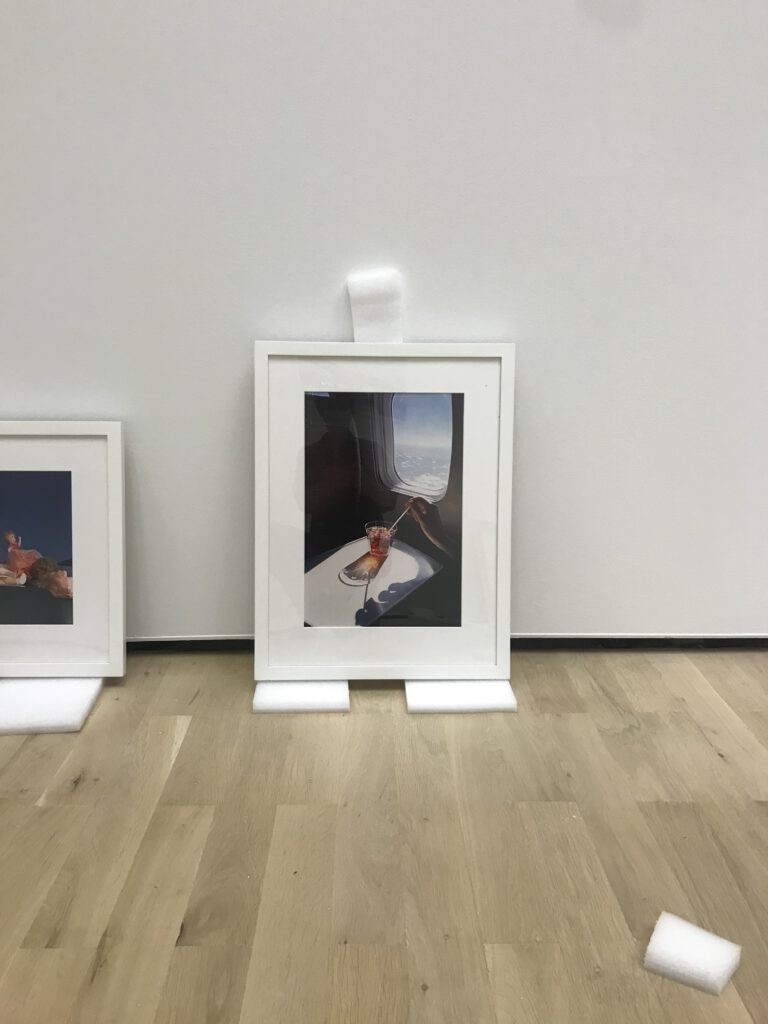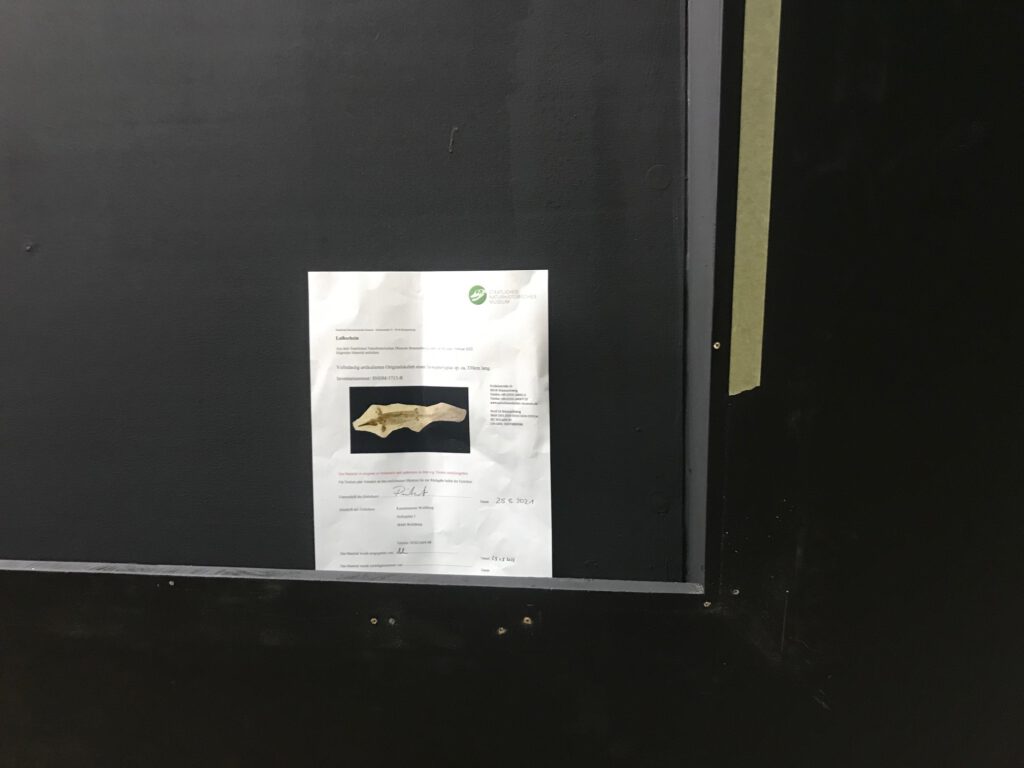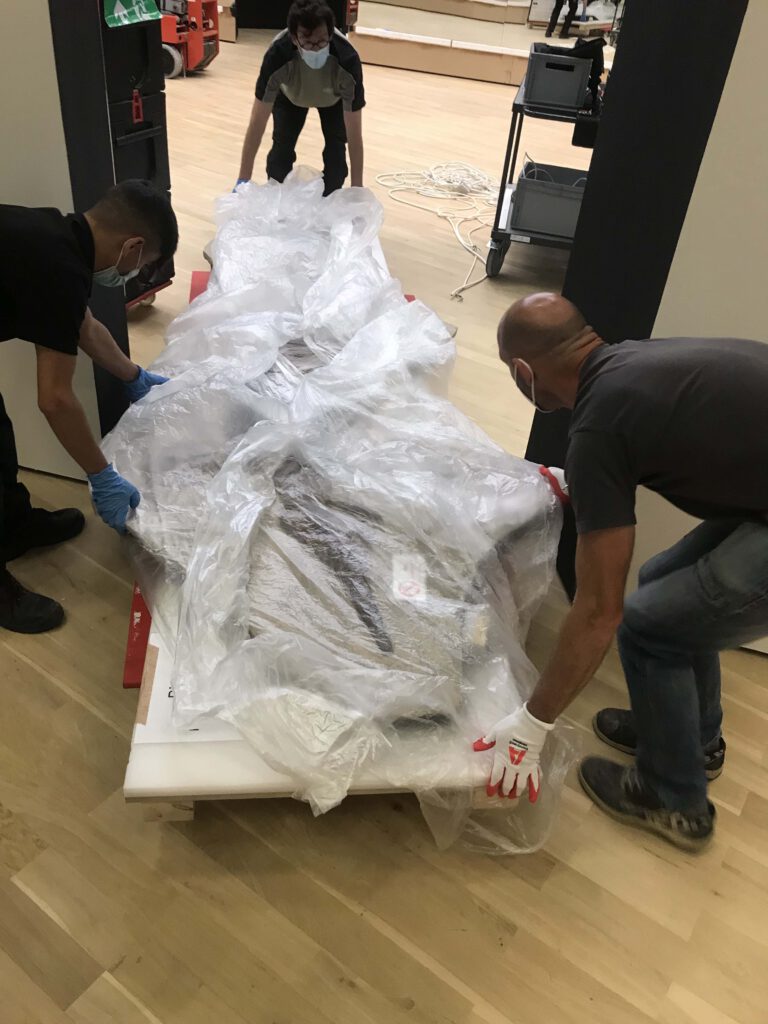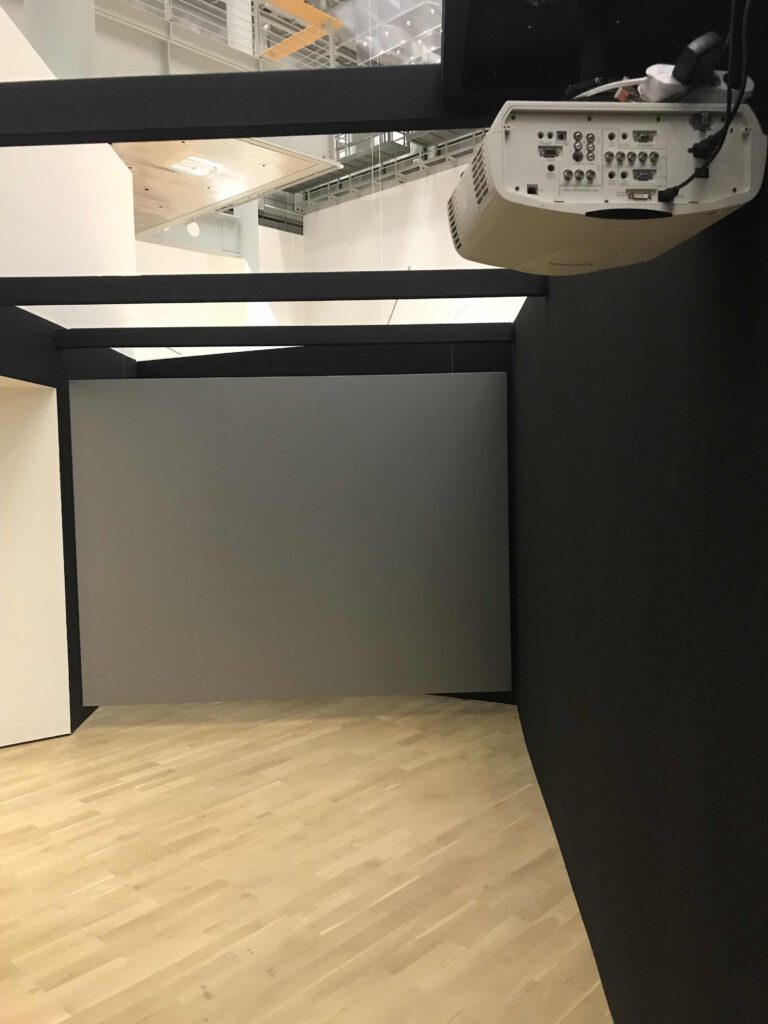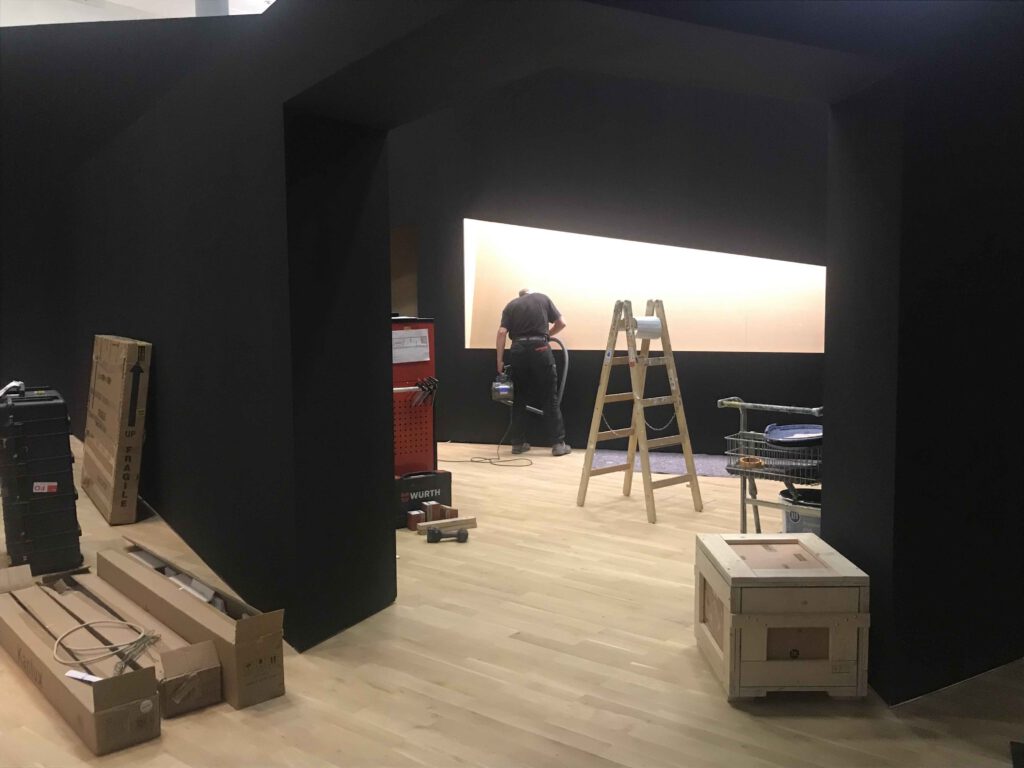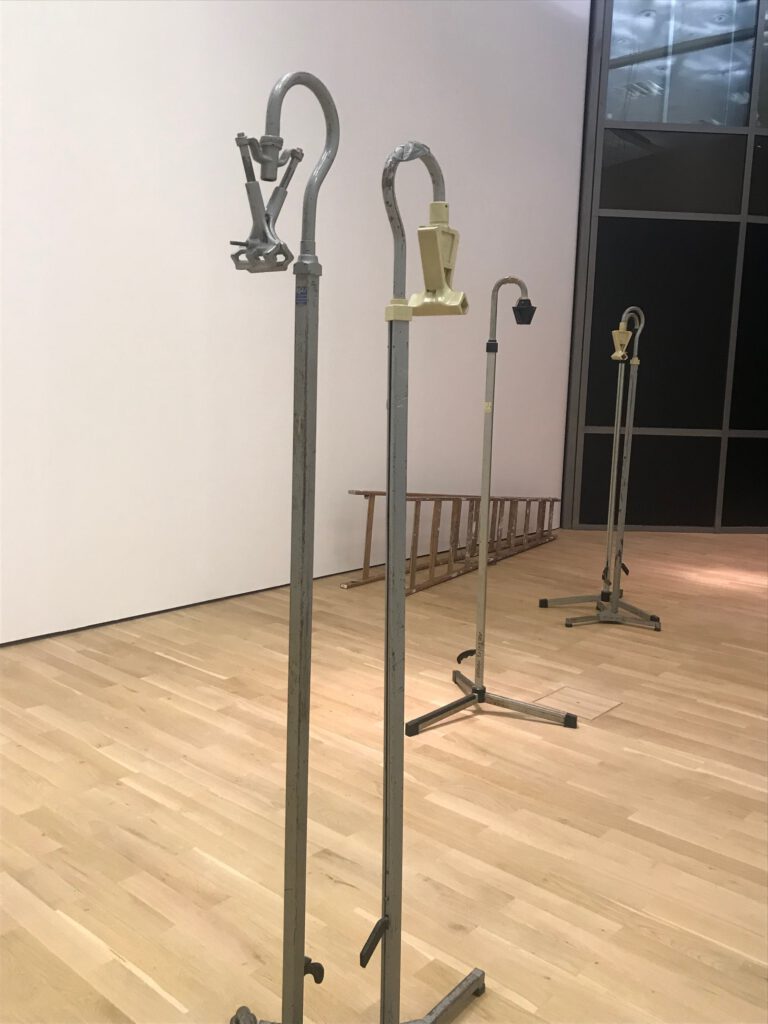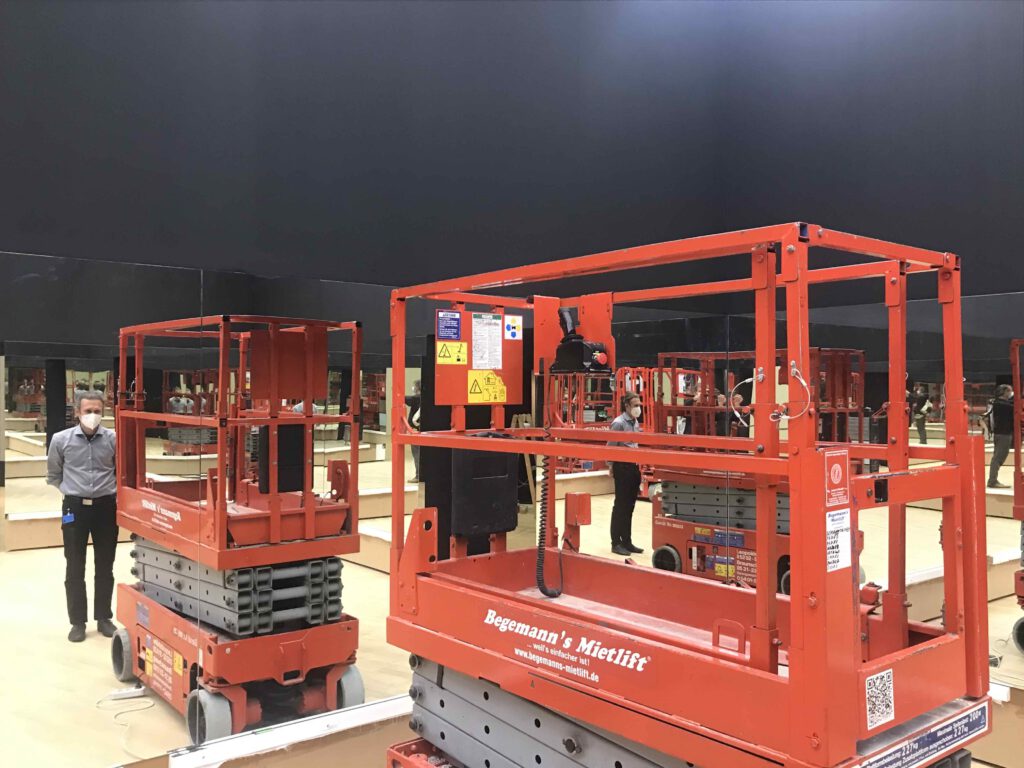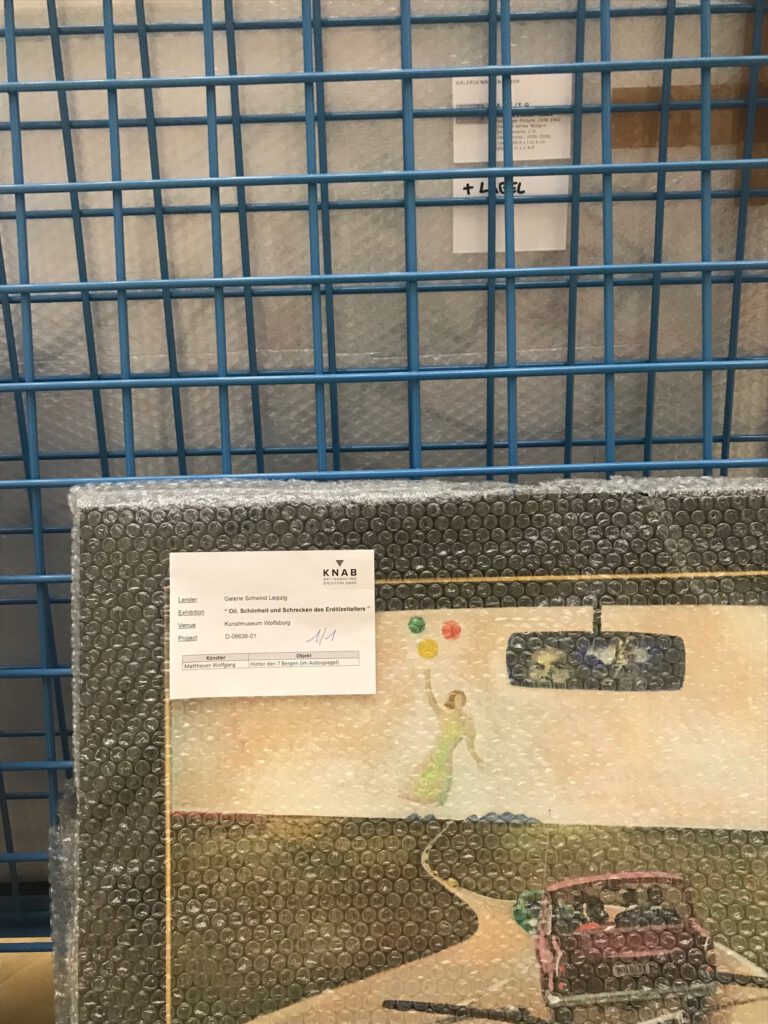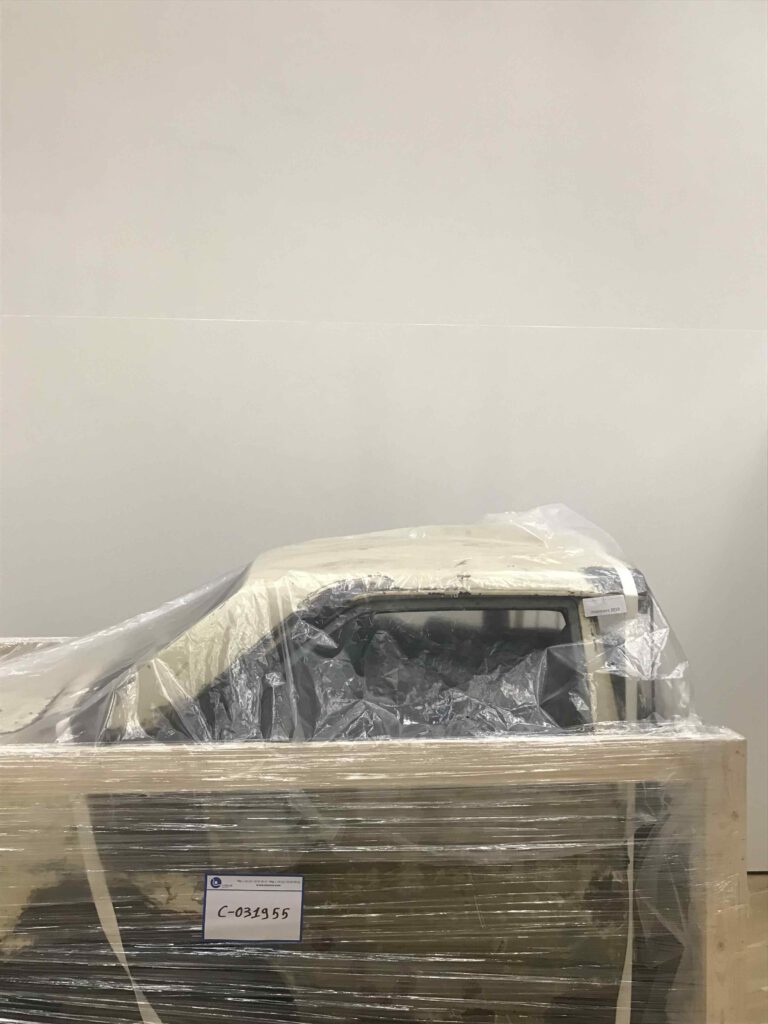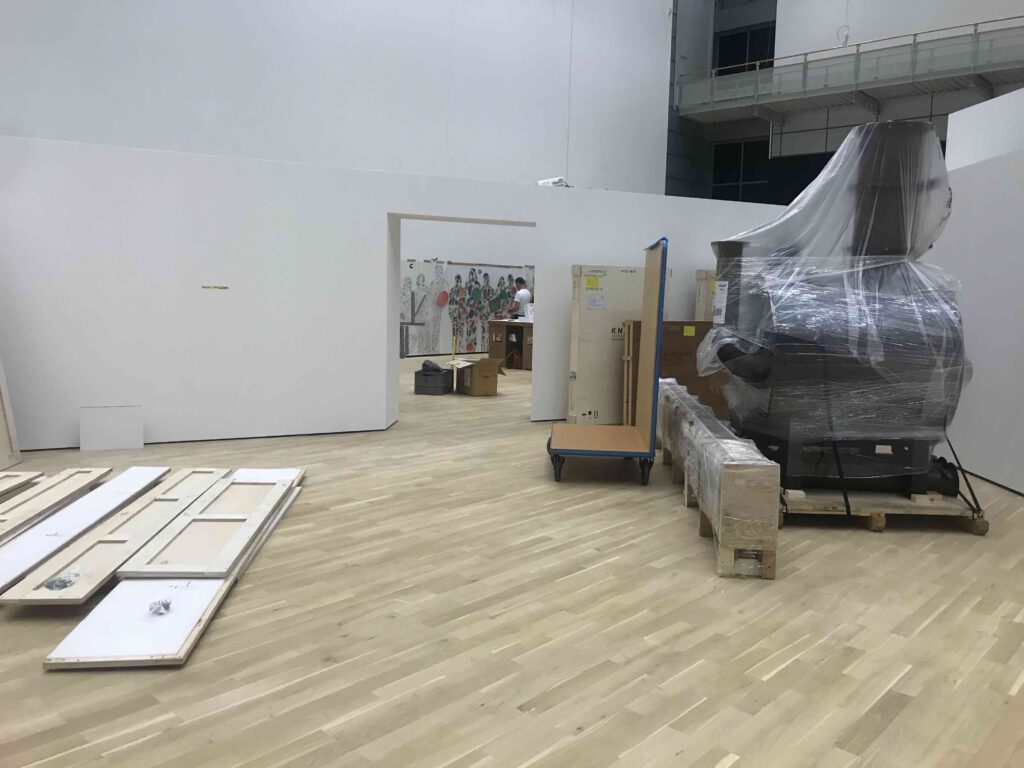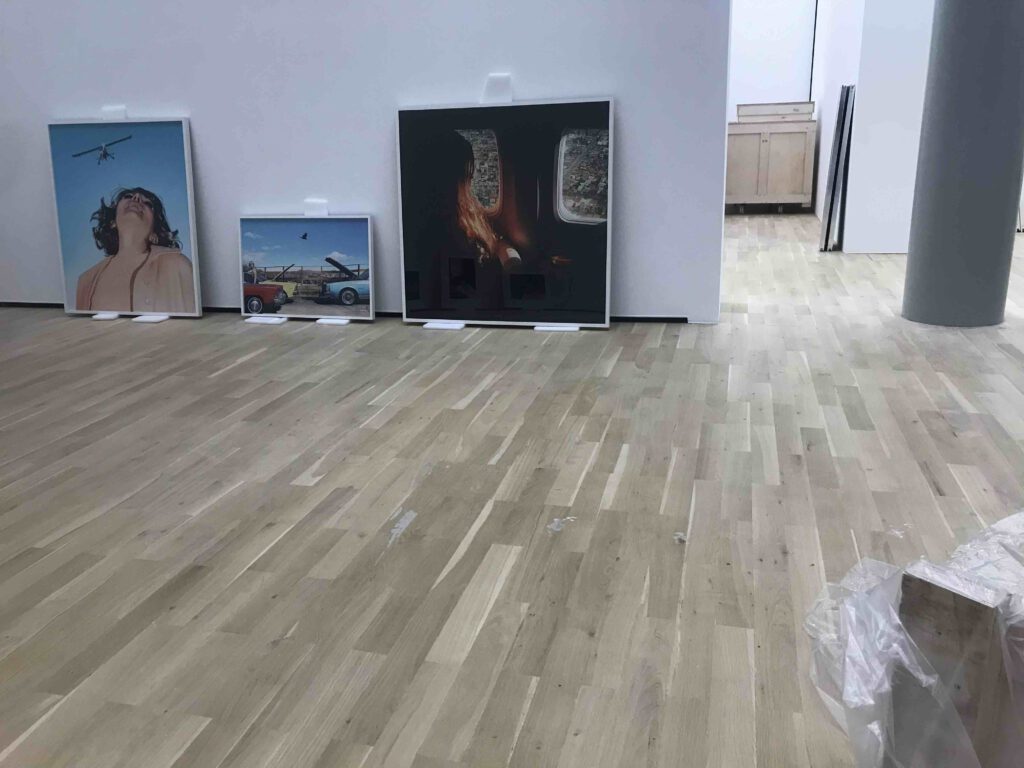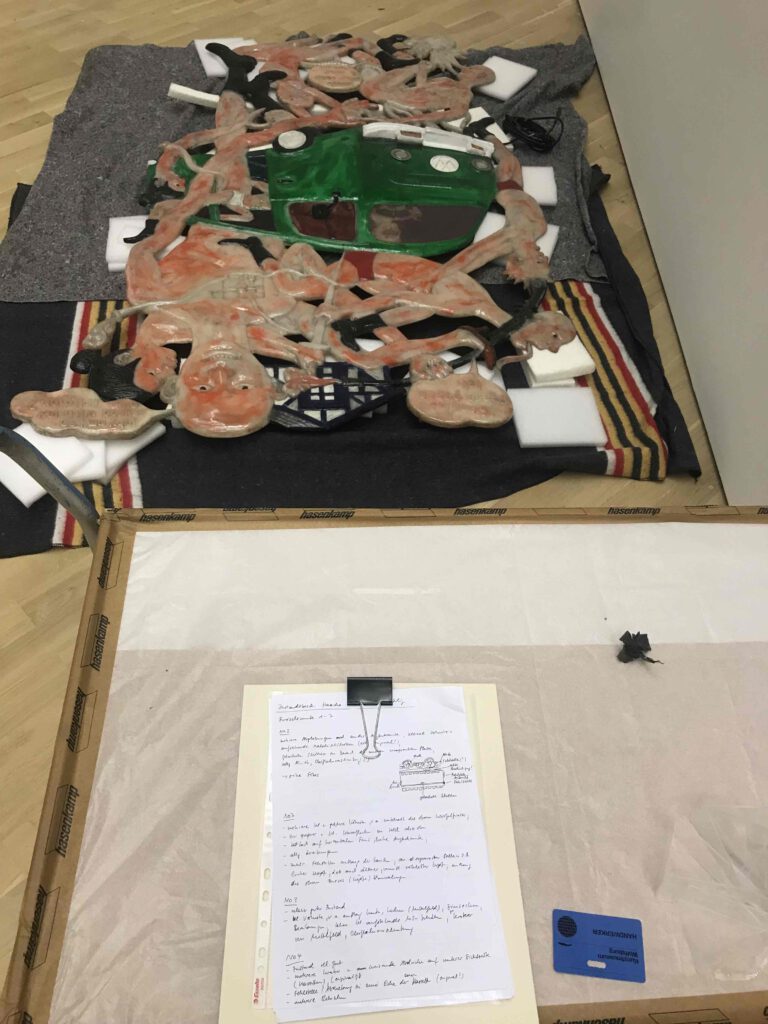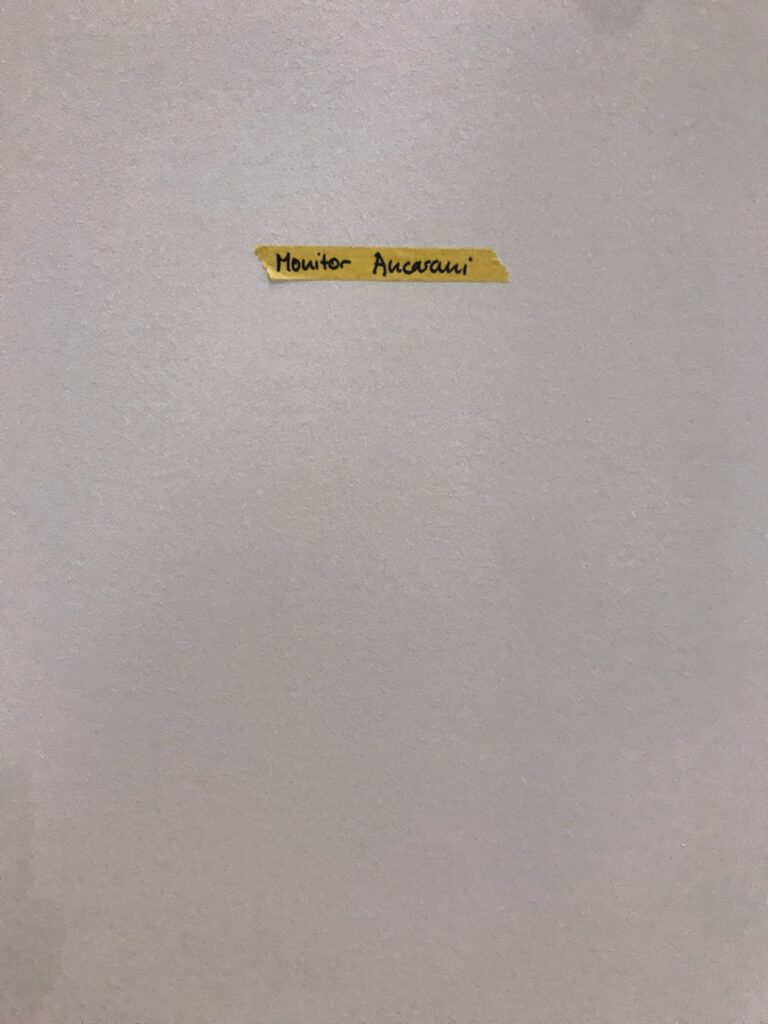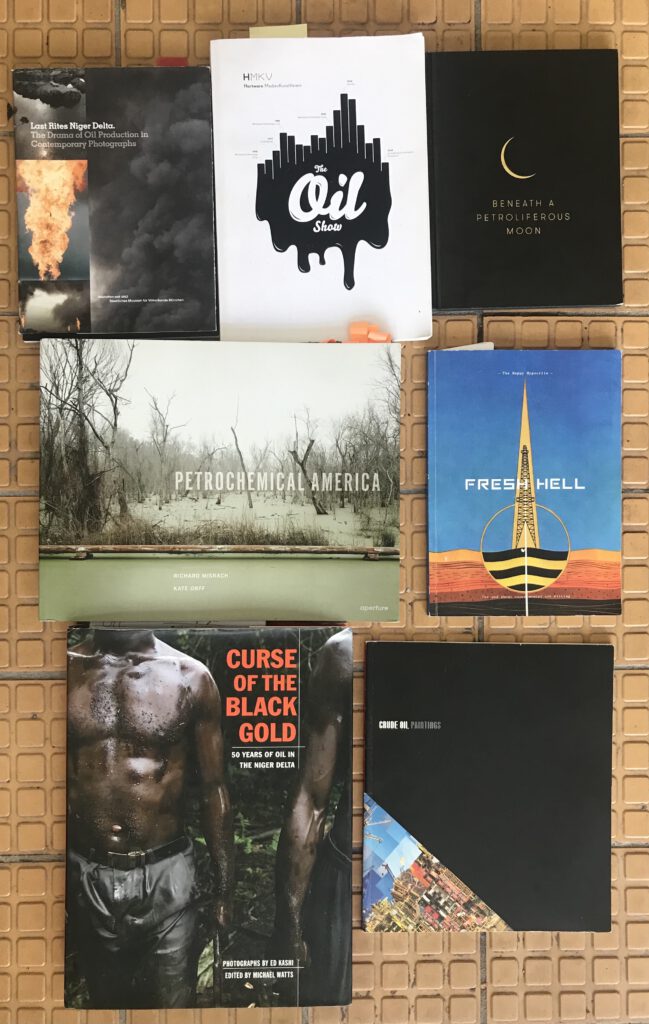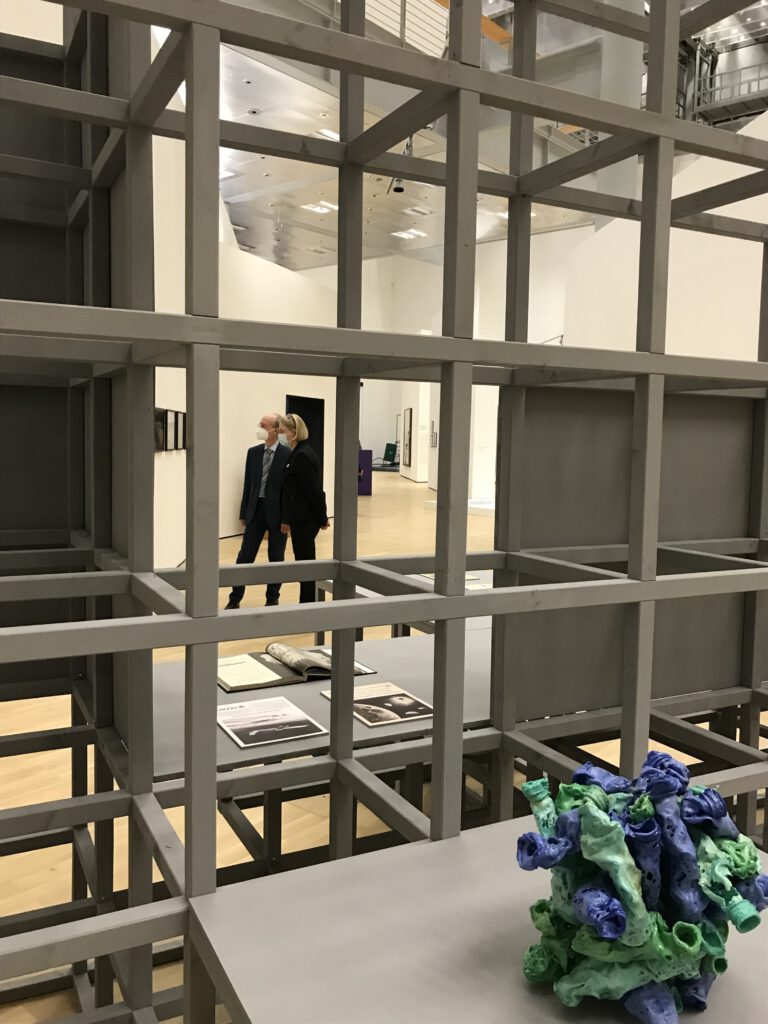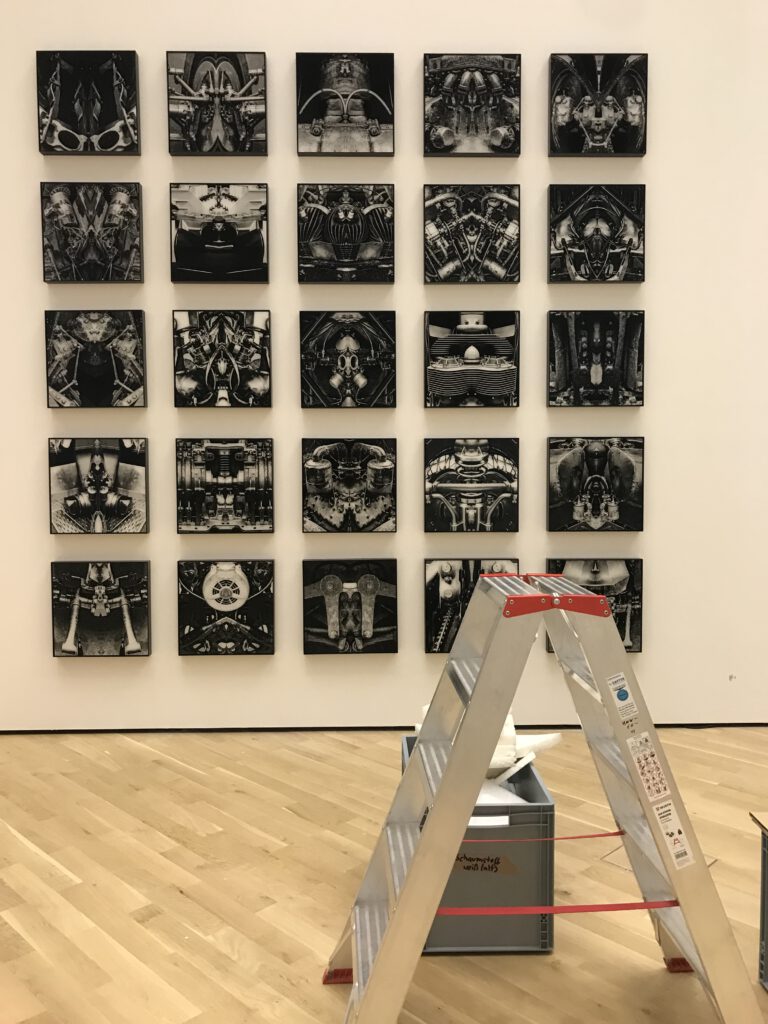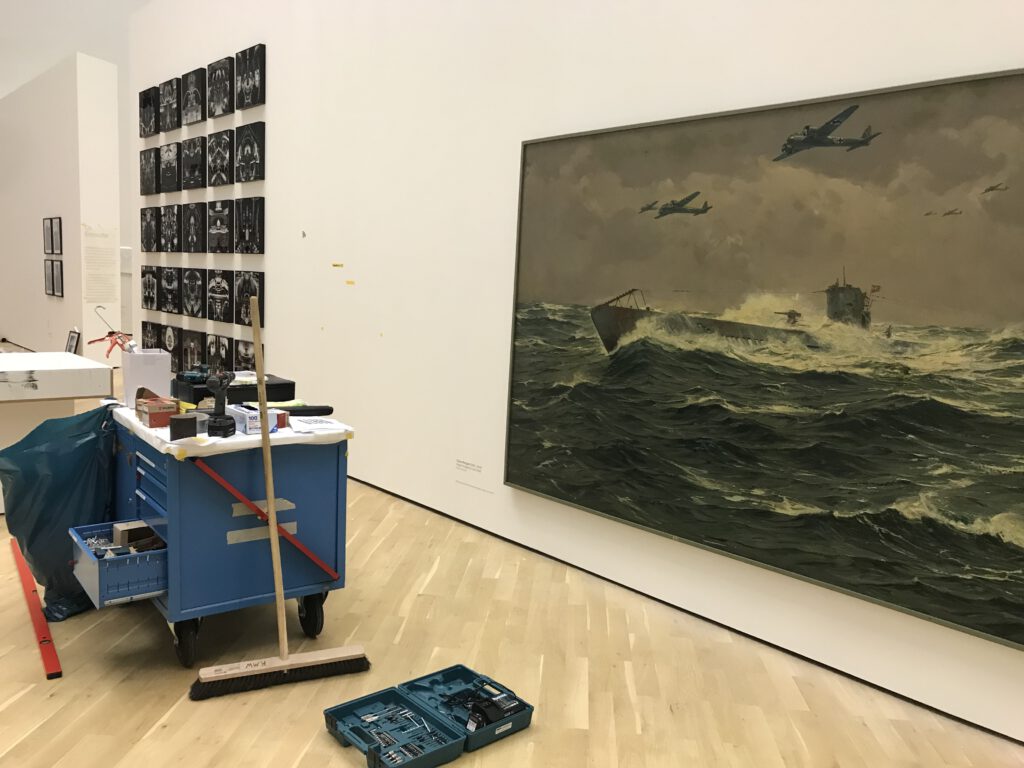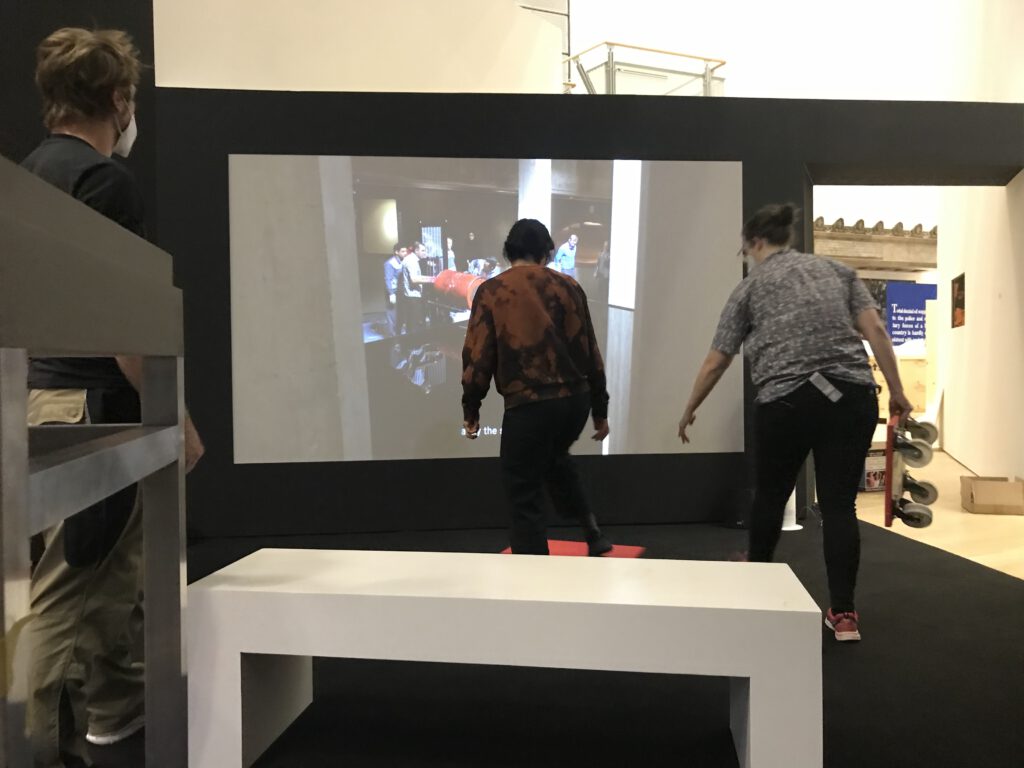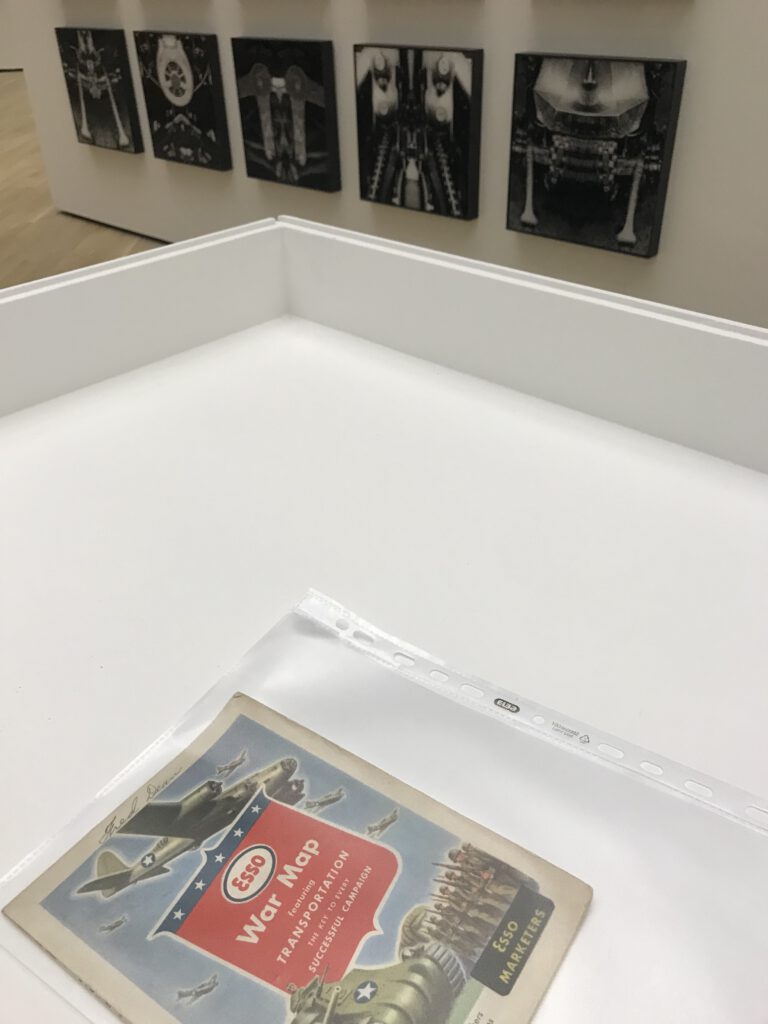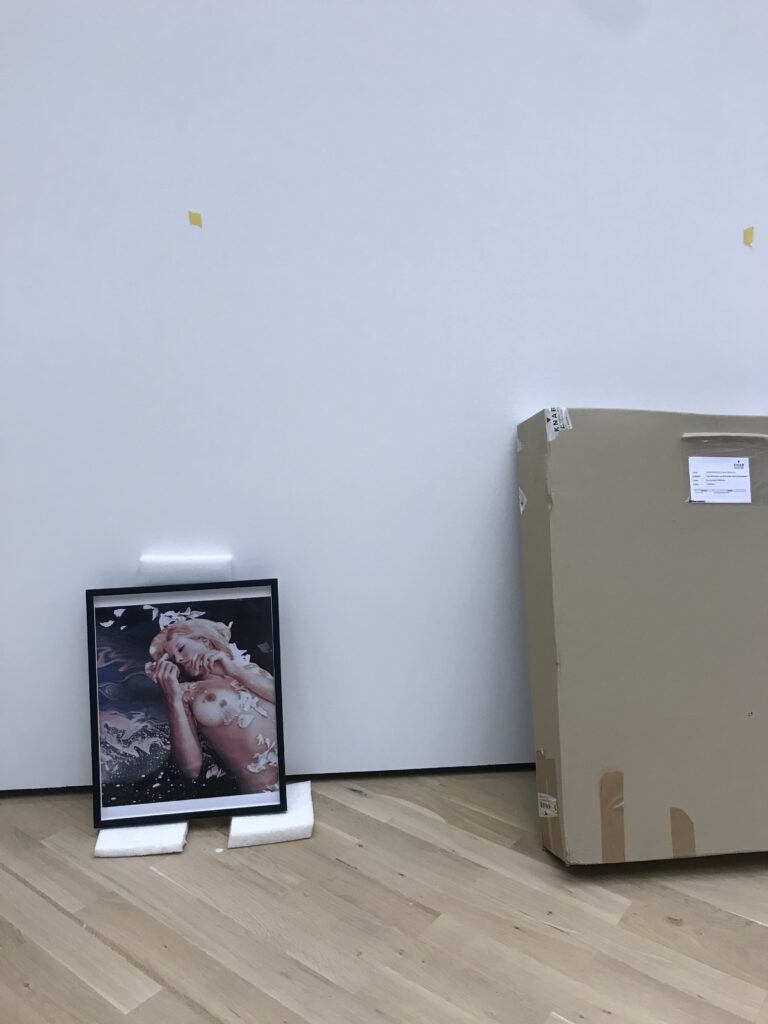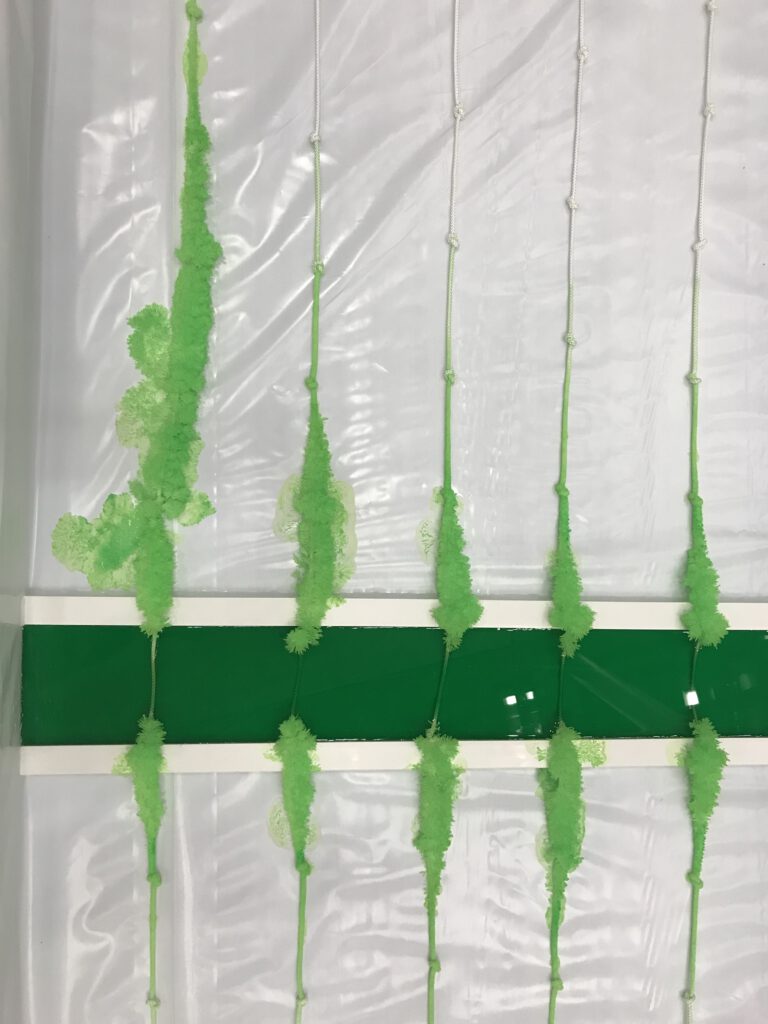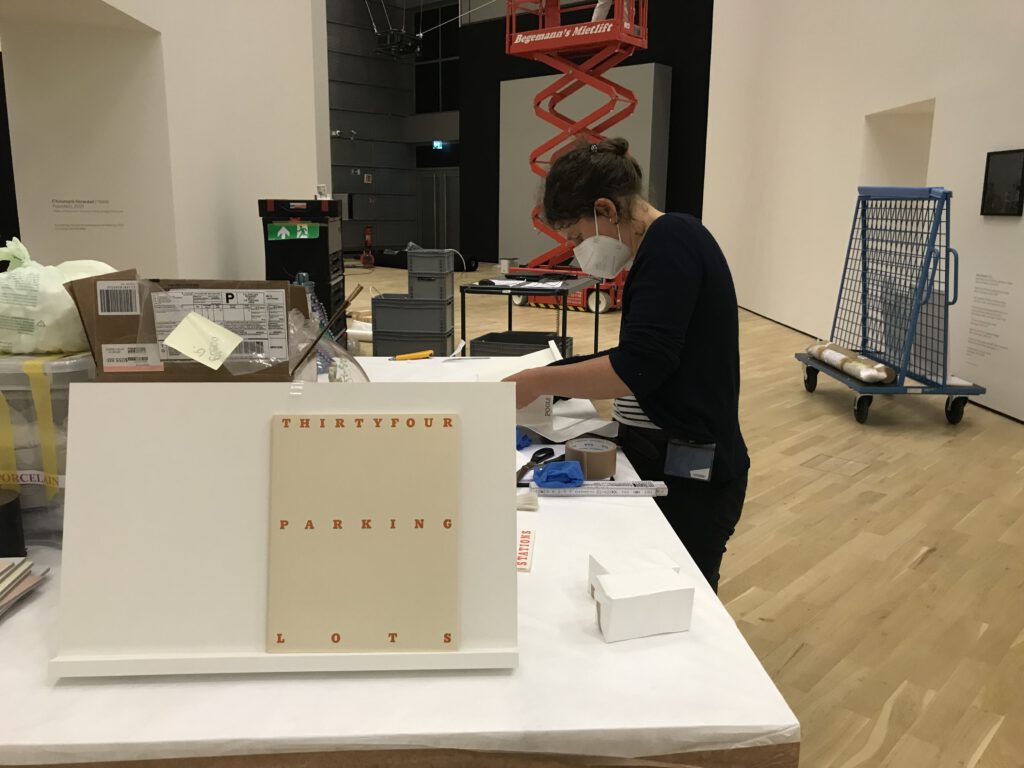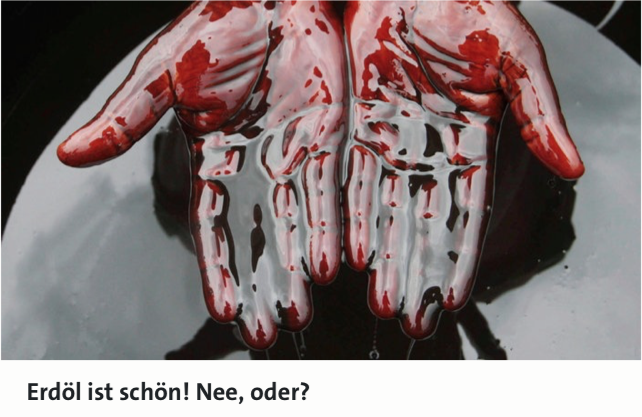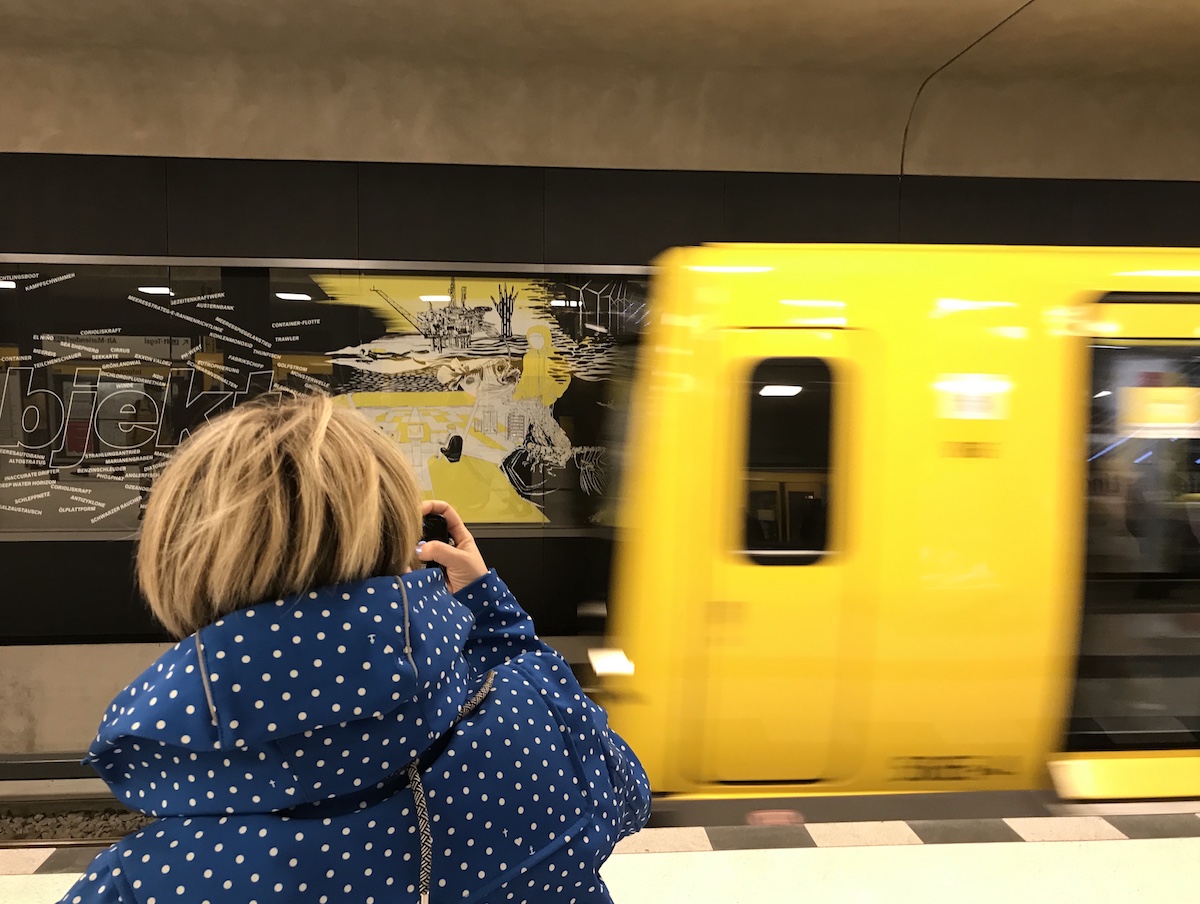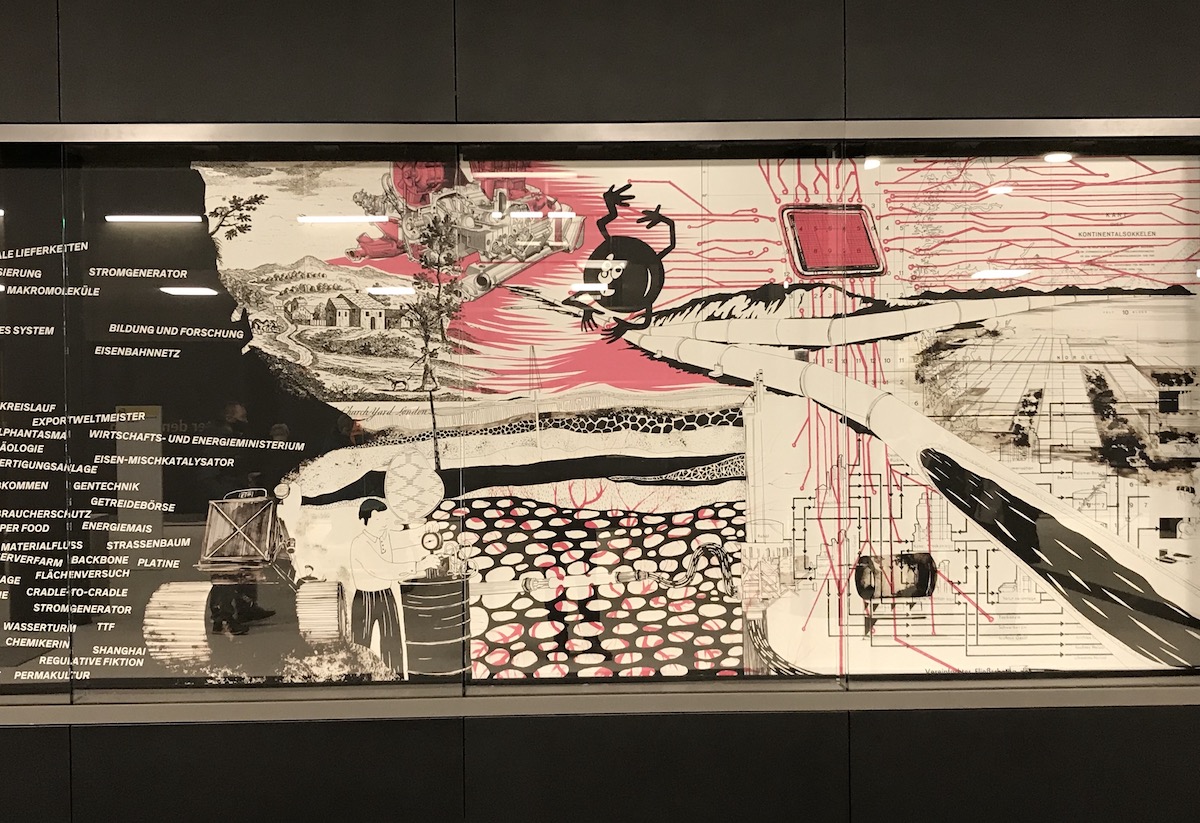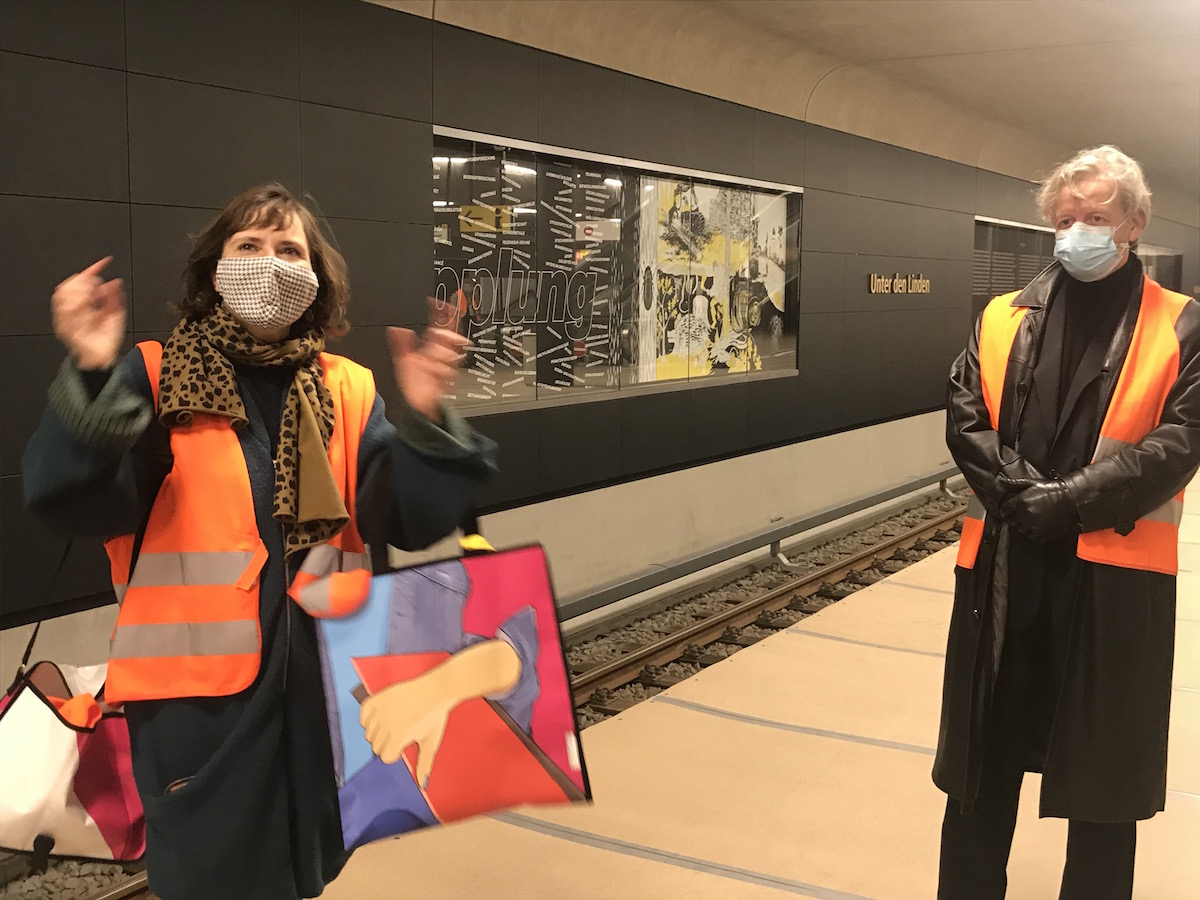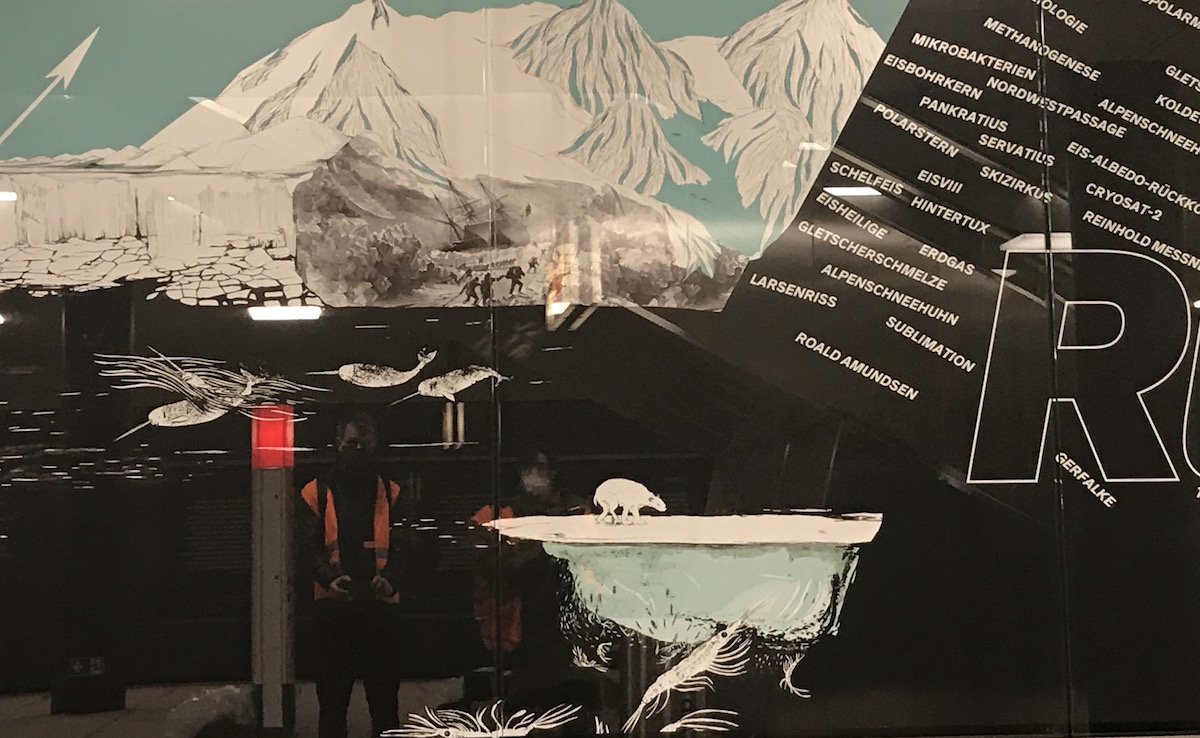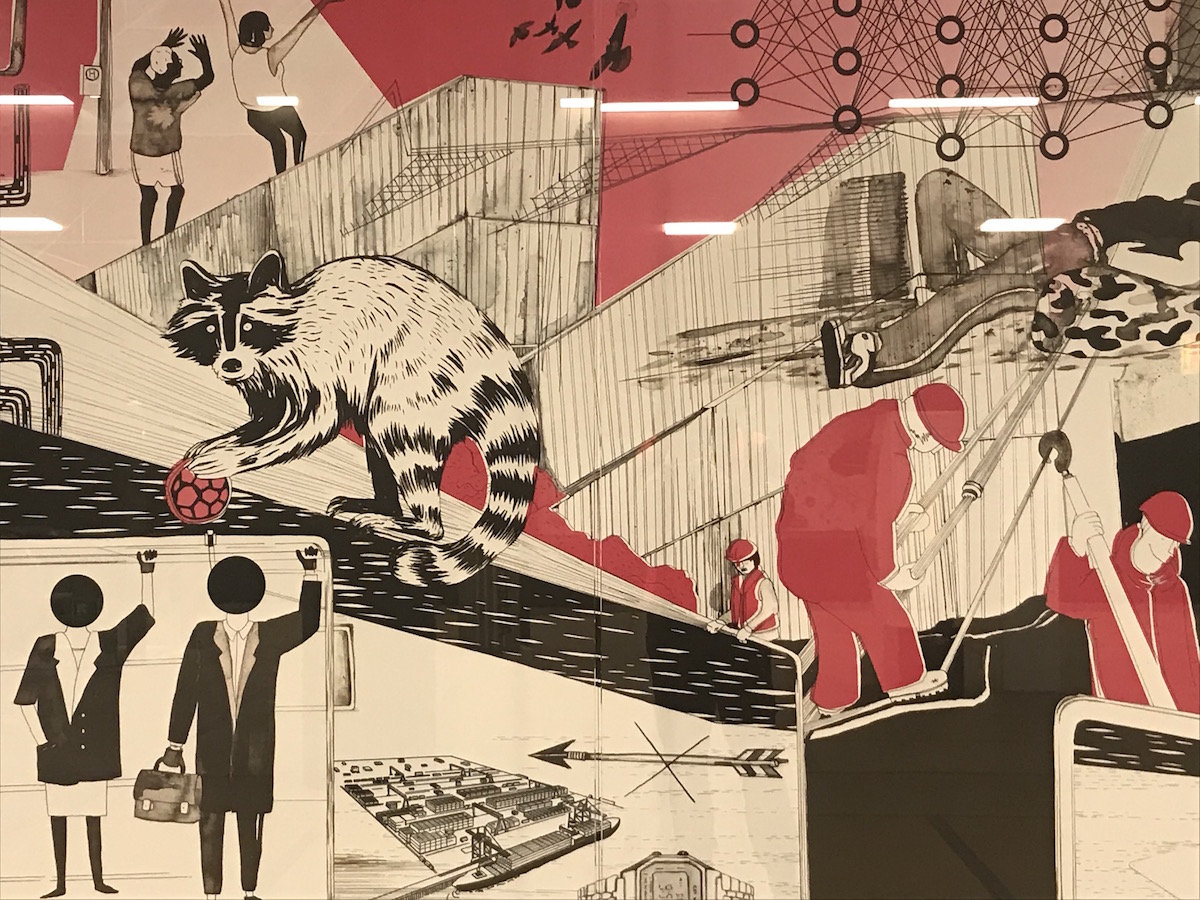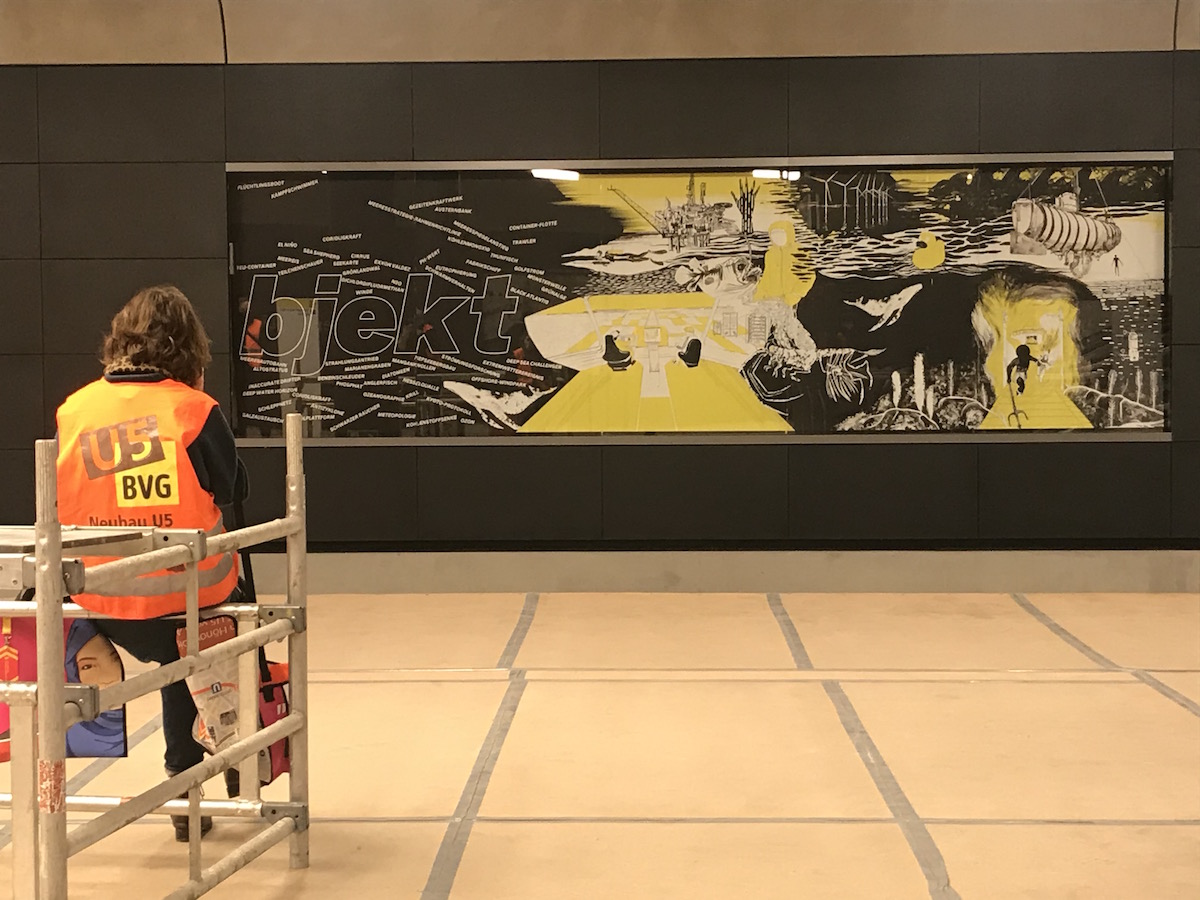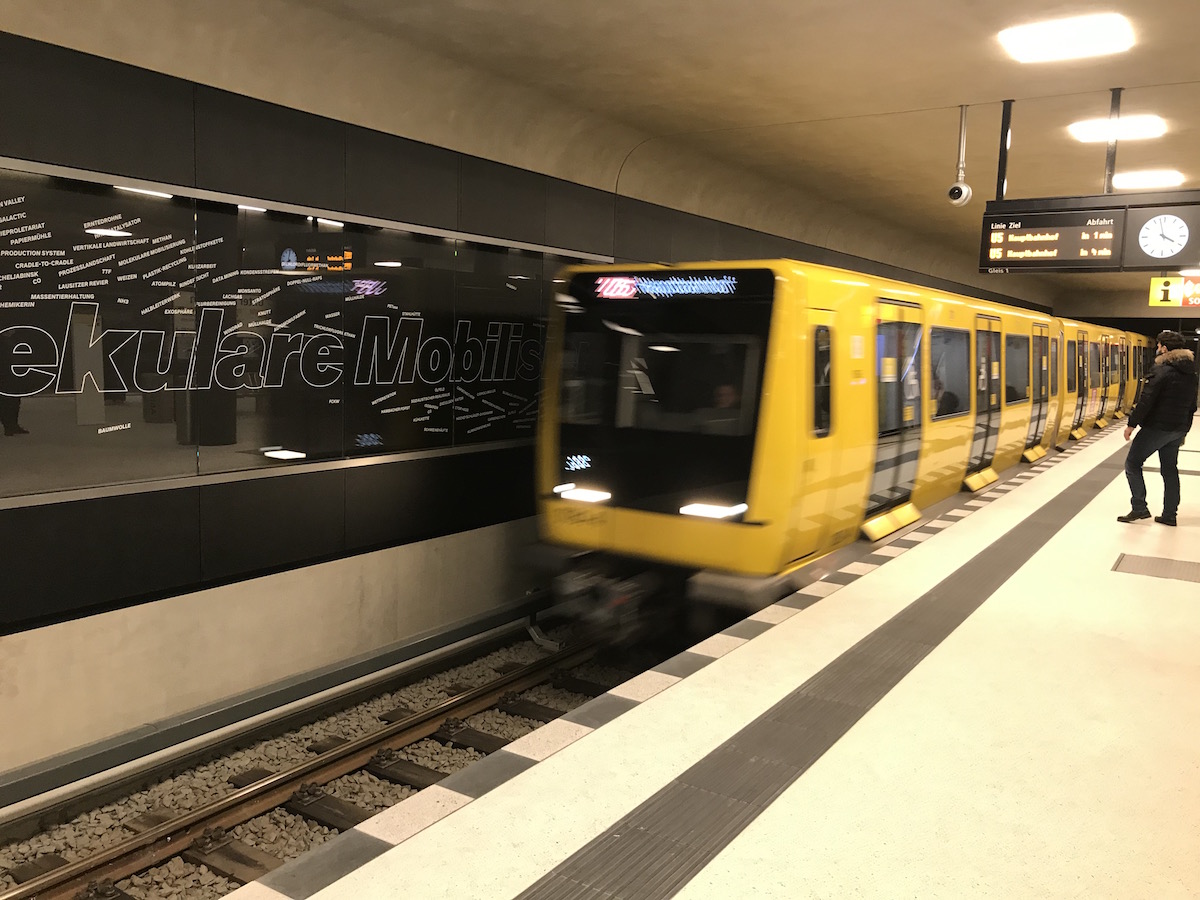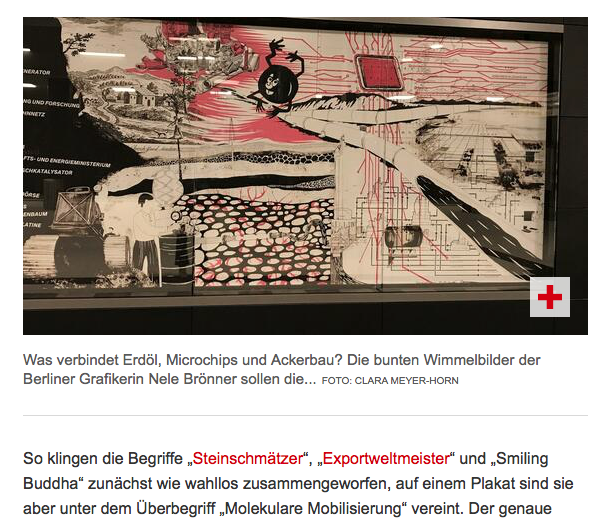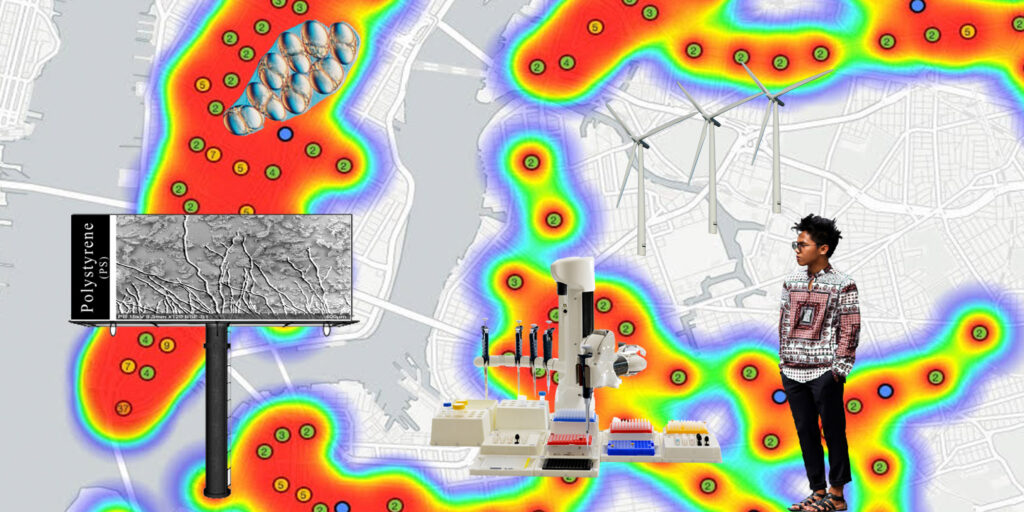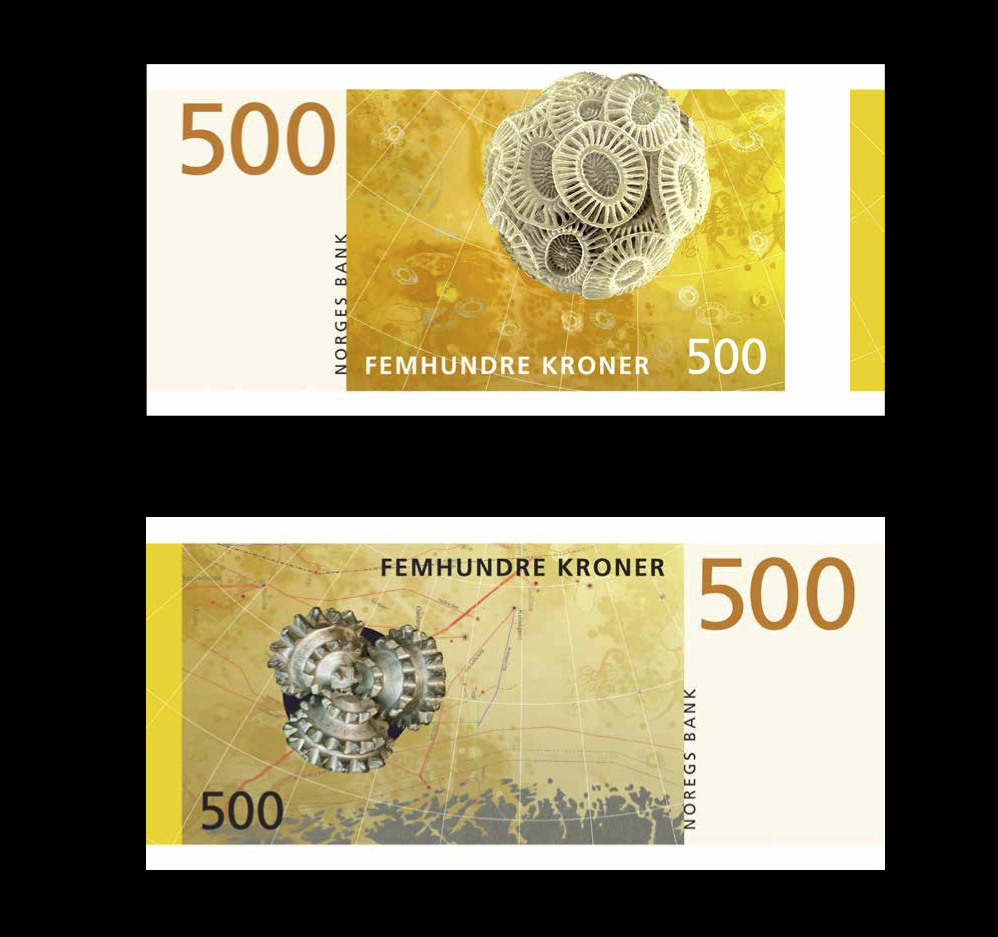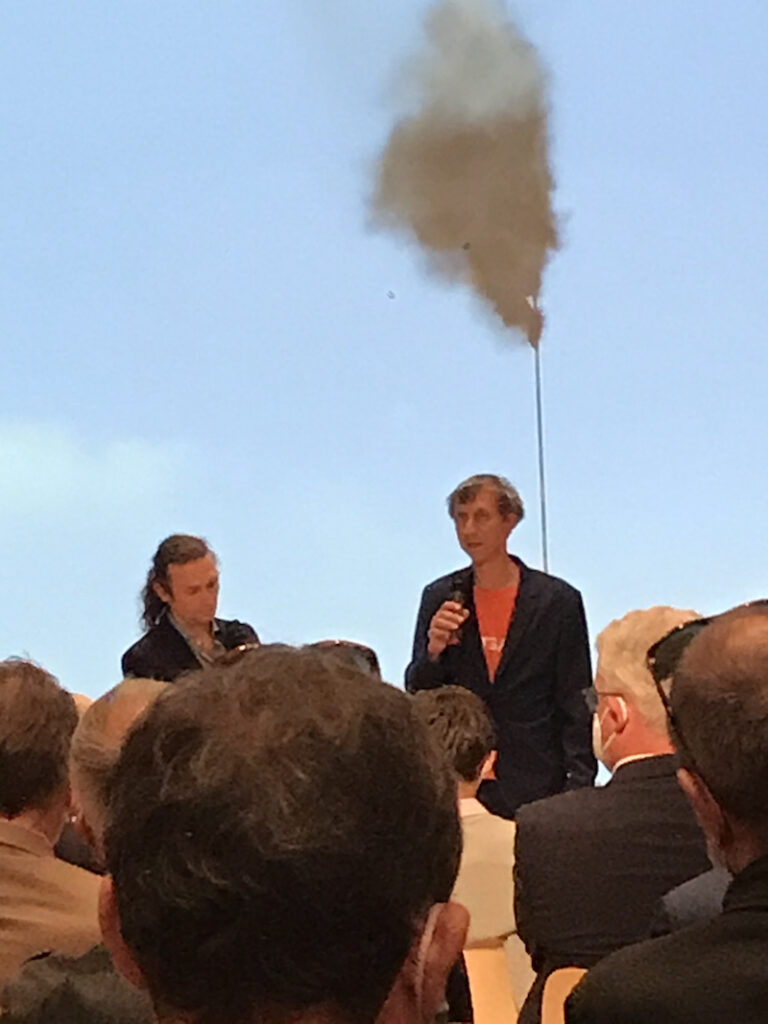
Mit 150, pandemiepolitikbedingt in der Teilnehmerzahl beschränkten und im Vorfeld registrierten Gästen eröffnete am Freitag, 3.9.2021, um 19:00 Uhr endlich unsere große Erdölausstellung, auf die wir seit 2016 hingearbeitet haben. Anwesend waren Bürgermeister und andere Würdenträger aus Wolfsburg und der Region, aber auch viele Freunde und Freundinnen aus Berlin, Wien, und anderswo. Die Reaktionen sowohl auf unsere Einführungsrede als auch auf die Ausstellung waren freundlich bis begeistert. Nachdem wir schon am Abend zuvor mit den eigens für unsere Ausstellung angereisten Künstler_innen Gunhild Vatn, Wes Bell und Joep van Lieshout bis in den späten Abend im Foyer des Museums geredet und gezecht hatten, setzten wir dies am Eröffnungsabend entschlossen dortselbst und im abgebildeten Eingangsbereich zwischen den heute obligatorischen Urban Gardening-Paletten fort. Es war schön.

Bereits am Donnerstag zur Pressekonferenz hatte sich ein großes Interesse und hoffentlich entsprechend großes Medienecho angekündigt. Fernsehteams von NDR, 3Sat und ZDF Heutejournal waren da, ebenso Radioleute und Vertreter_innnen diverser regionaler und überregionaler Zeitungen. Hier folgt eine Auflistung aller bislang erschienenen und gesendeten Beiträge (von denen wir etwas mitbekommen haben):
Presseberichte
Print und Online: Wolfsburger Allgemeine Zeitung, 2.9.2021, Deshalb riecht’s nach Öl im Kunstmuseum
Print und Online: Braunschweiger Zeitung, 2.9.2021, Erdöldämmerung in Wolfsburg
Audio: Deutschlandfunk Kultur, Fazit, 3.9.2021, Beitrag von Simone Reber und Interview mit Benjamin Steininger
Video: NDRkultur, 3.9.2021, Schau in Wolfsburg beleuchtet Fluch und Segen von Erdöl
Online: Deutsche Welle, 4.9.2021, Nicht ideologisch: Schau blickt auf das Erdölzeitalter
Video: ZDF und 3sat, Kulturzeit, 6.9.2021, OIL. Schönheit und Schrecken des Erdölzeitalters
Print und Online: FAZ, 8.9.2021, Stählerner Fingerzeig nach oben
Video: heute Journal, 13.9.2021, Schönheit und Schrecken des Erdölzeitalters
Print und Online: taz nord, 21.9.2021, Unsichtbar und allgegenwärtig
Print und Online: Süddeutsche Zeitung, 16.10.2021, Wie geschmiert
Print: ART magazin 11/2021, Schwarzes Gold
Online: H/SOZ/KULT, 13.11.2021, OIL. Schönheit und Schrecken des Erdölzeitalters
Print: Artline 11/21, Spektakulärer Abgesang
Kunstbulletin 12/2021, Öl – Schönheit und Schrecken
